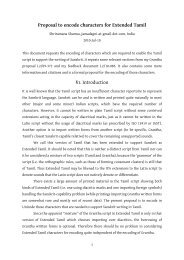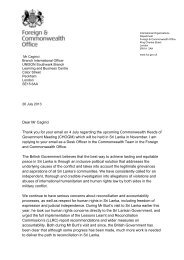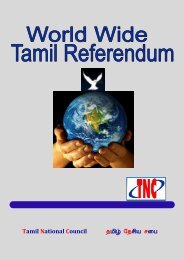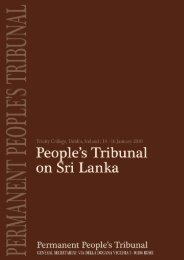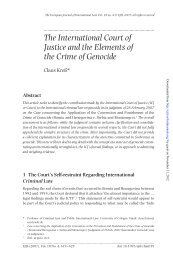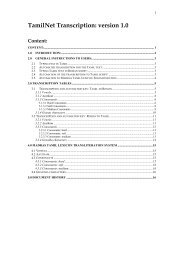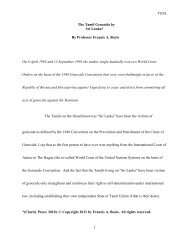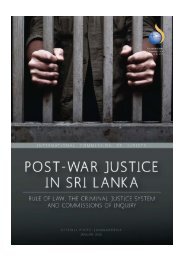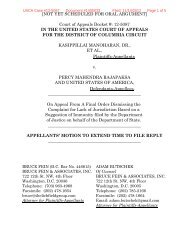Refugees and forced displacement - United Nations University
Refugees and forced displacement - United Nations University
Refugees and forced displacement - United Nations University
Create successful ePaper yourself
Turn your PDF publications into a flip-book with our unique Google optimized e-Paper software.
REFUGEES, SECURITY, AND VULNERABILITY 25among the first objectives. Despite the fact that humanitarian assistancewas plentiful at first, the international community could not inducerefugees <strong>and</strong> displaced minority populations to attempt to reclaim theirhomes in areas hostile to their ethnic group. In both Bosnia <strong>and</strong> Haiti,which are still in the midst of the transition from war to peace, internationalagencies have been cutting back operations <strong>and</strong> donors reducingsupport, despite the fact that the specific needs for which internationalassistance was initially mobilized are still high, <strong>and</strong> before nationalinstitutions <strong>and</strong> capacities to meet these needs have been established.In some respects the needs of refugees are essentially gender neutral –something that is reflected in the main institutions, laws, <strong>and</strong> organizationsthat manage <strong>and</strong> address refugee <strong>and</strong> <strong>displacement</strong> issues. Yetapproximately 75–80 per cent of the displaced are women <strong>and</strong> children.Women suffer differently during conflict <strong>and</strong> <strong>displacement</strong> <strong>and</strong> have particularneeds. The experience of flight <strong>and</strong> <strong>displacement</strong> has differentimplications for male <strong>and</strong> female members of a population. The humanrights dimensions leading to flight are also gendered. Although womenmay experience the same human rights deprivations as men, humanrights violations often take different forms for women <strong>and</strong> men becauseof their perceived gender roles.Julie Mertus (‘‘Sovereignty, Gender, <strong>and</strong> Displacement’’) argues thatrefugee issues reflect the socially constructed roles of women <strong>and</strong> menin society, <strong>and</strong> that <strong>displacement</strong> itself is gendered <strong>and</strong> influenced byreal <strong>and</strong> perceived roles, responsibilities, constraints, opportunities, <strong>and</strong>needs of men <strong>and</strong> women in society. The existence of an uprooted <strong>and</strong>imperilled population should be filtered through a ‘‘gender lens,’’ toinclude root human rights violations <strong>and</strong> other causes of flight, the typeof violence <strong>and</strong> other rights violations encountered during flight <strong>and</strong> intemporary encampments, <strong>and</strong> the consideration of permanent solutionsfor resettlement or return. At the same time, the mechanisms for boththe delivery of humanitarian aid <strong>and</strong> the protection <strong>and</strong> resettlement orreturn of uprooted <strong>and</strong> imperilled people should account for the genderdimensions of their work. Mertus argues that the gendered process of<strong>displacement</strong> occurs within the context of shifting <strong>and</strong> competing sovereigntiesdescribed throughout her chapter. She thus considers two interrelatedvariables: the gender dimensions of <strong>displacement</strong> <strong>and</strong> changingapproaches to sovereignty. Each dimension has important consequencesfor displaced populations.Mertus demonstrates that there has been progress in recognizing genderedneeds, but that four sets of roadblocks remain: (i) a gap betweenpolicies adopted at headquarters <strong>and</strong> their implementation in the field;(ii) a continued failure to address the needs of uprooted populationswho remain internally displaced; (iii) the continued inability of those who



